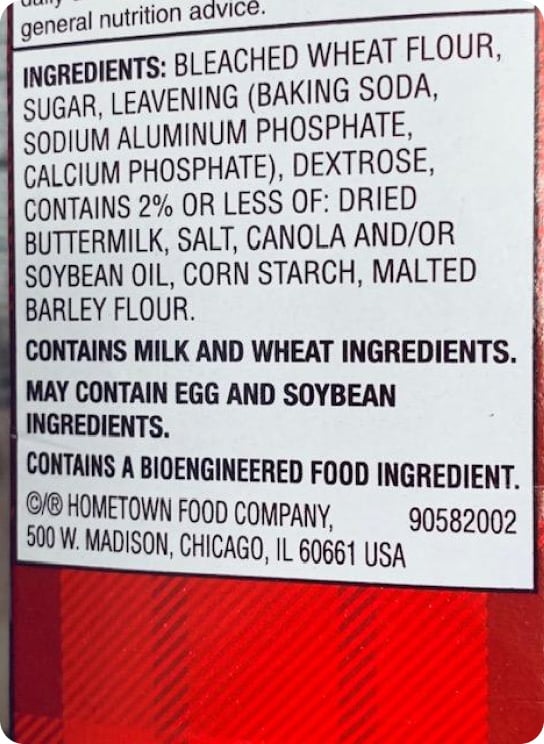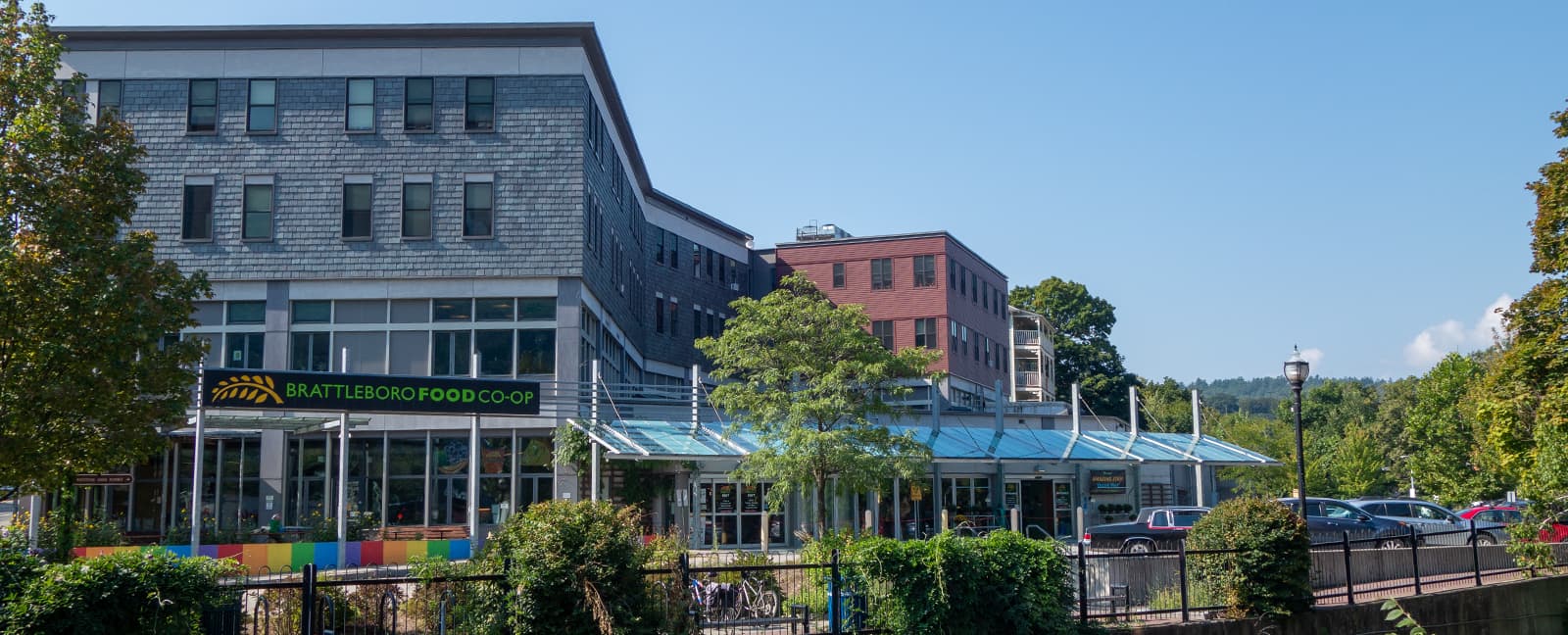

Ends Policy #4: An enterprise that engages in sustainable and regenerative environmental practices.
For the Co-op, sustainable and regenerative environmental practices refer to our doing business in a way where we have a regenerative impact on our environment.
We work toward a positive impact on the people in our community and the surrounding area. We encourage a regenerative and positive impact on the Whetstone Brook and Connecticut River and the flora and fauna of our natural environment.
We aspire for our food co-op to grow towards a regenerative impact and educate our patrons on the importance of honoring the earth and establishing a viable future for our children. Our environmentally-designed building is a terrific example of our sustainability approach and our focus on a regenerative business. The Co-op’s building is the result of a collaboration with the Windham & Windsor Housing Trust and Housing Vermont.
The Co-op’s retail space resides on the first floor; the second floor houses our offices, a commissary kitchen, a cooking classroom, a community room, and a conference room. The building also houses 24 apartments owned and managed by the Windham & Windsor Housing Trust.
A few highlights of the green initiatives we embrace are the inclusion of solar panels on the roof, Vermont slate on the exterior of the building, and permeable street pavers outside the store entrance.
The Brattleboro Food Co-op’s building was awarded the 2012 EPA National Award for Smart Growth – Main Street or Corridor Revitalization by the United States Environmental Protection Agency.
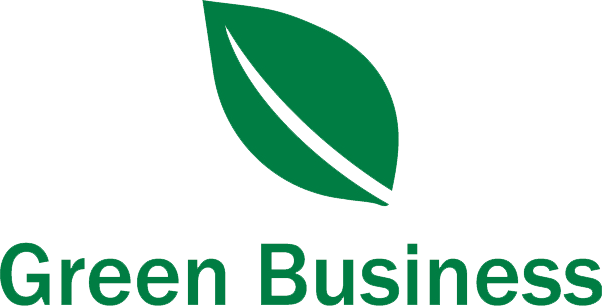
The insulation levels are specified with a minimum R-25 at the walls, R-40 roof system, and R-20 at the foundation and slabs.
All windows are triple-glazed with fiberglass frames to minimize heat loss.
There is a green roof over a part of the store, while the rest of the roof has been set up structurally to be retrofitted with a green roof as funds become available. Green roofs reduce the “urban heat island” effect, help cool the building in the summer, and mitigate stormwater runoff by absorbing and slowing roof rainwater.
The building is partially clad in slate siding, a natural, durable, local Vermont product. It has better energy performance than brick and also reduces the structural steel requirements, which is both cost-effective and uses fewer resources and less embedded energy in the production of the steel.
Building finishes were the latest in recycled, natural, durable, and eco-friendly products available on the market.
The floors are polished concrete, a natural, durable, and maintenance-free product that will not require solvent-based cleaners or sealers.
All ceramic tiles in the store are made from 100% recycled products.
All the counter surfaces in the store are made of a solid surfacing product made from 100% recycled paper and locally fabricated in Springfield, VT.
The electrical system and the roof’s structure were set up for the eventual addition of a solar-powered photovoltaic array to produce electricity. This project will eventually come online through a collaborative project with Co-op Power from Greenfield, MA.
The site plan was designed to reduce negative environmental impacts.


The refrigeration equipment within the Co-op’s grocery store has been specified as highly energy efficient. During the winter months, the waste heat is recaptured and recycled to provide space heating for the building, including heat for the tenants of the apartments above. This same waste heat provides all domestic hot water needs for the apartments and the Co-op all year.
Natural daylighting is maximized in the Co-op store and offices with the careful layout of skylights and interior light-reflecting blinds to bring the daylight deep into interior spaces. All artificial light has been designed using state-of-the-art energy-efficient light fixtures requiring minimal watts per square foot to operate and fully light the store after dark.
The various pumps and motors required to operate a grocery store are high-efficiency variable-speed units to cut electrical loads to optimum levels.
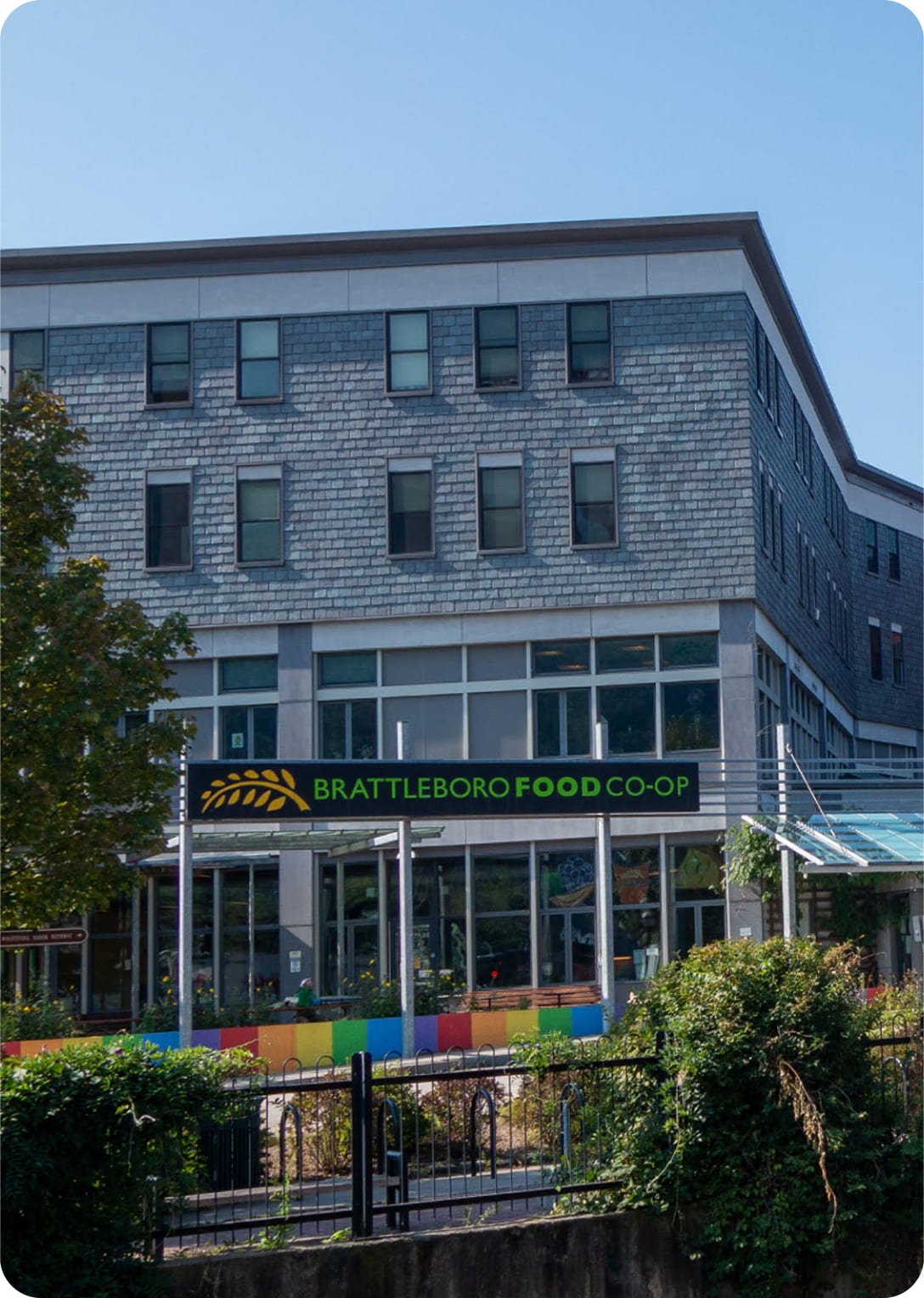
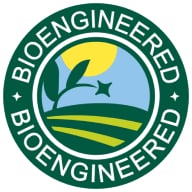
The USDA Agricultural Marketing Service defines bioengineered foods as those that contain detectable genetic material that has been modified through specific lab techniques and cannot be created through conventional breeding or found in nature.
Please visit the “List of Bioengineered Foods” page from the USDA website, where you can view downloadable PDF Data Sheets on each item listed and keep up to date with newly designated foods.
The current USDA list of bioengineered conventional crops includes the following 13 foods:

Organic does not equal Bioengineered.
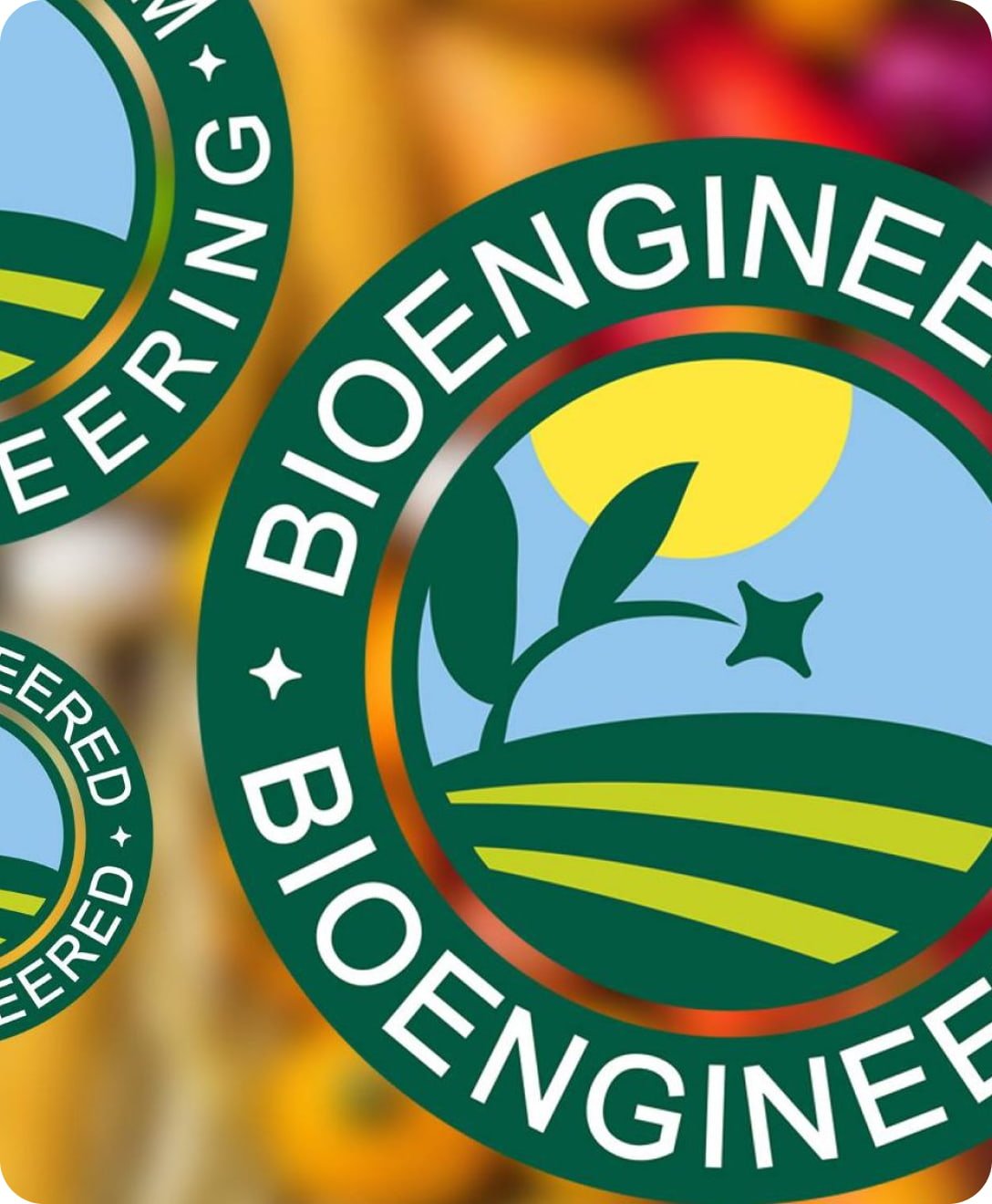
Despite the potential for confusion, USDA offers food companies several ways to legally label bioengineered foods, to be determined at the company’s discretion.
Companies may choose one of the following methods to disclose bioengineering:
